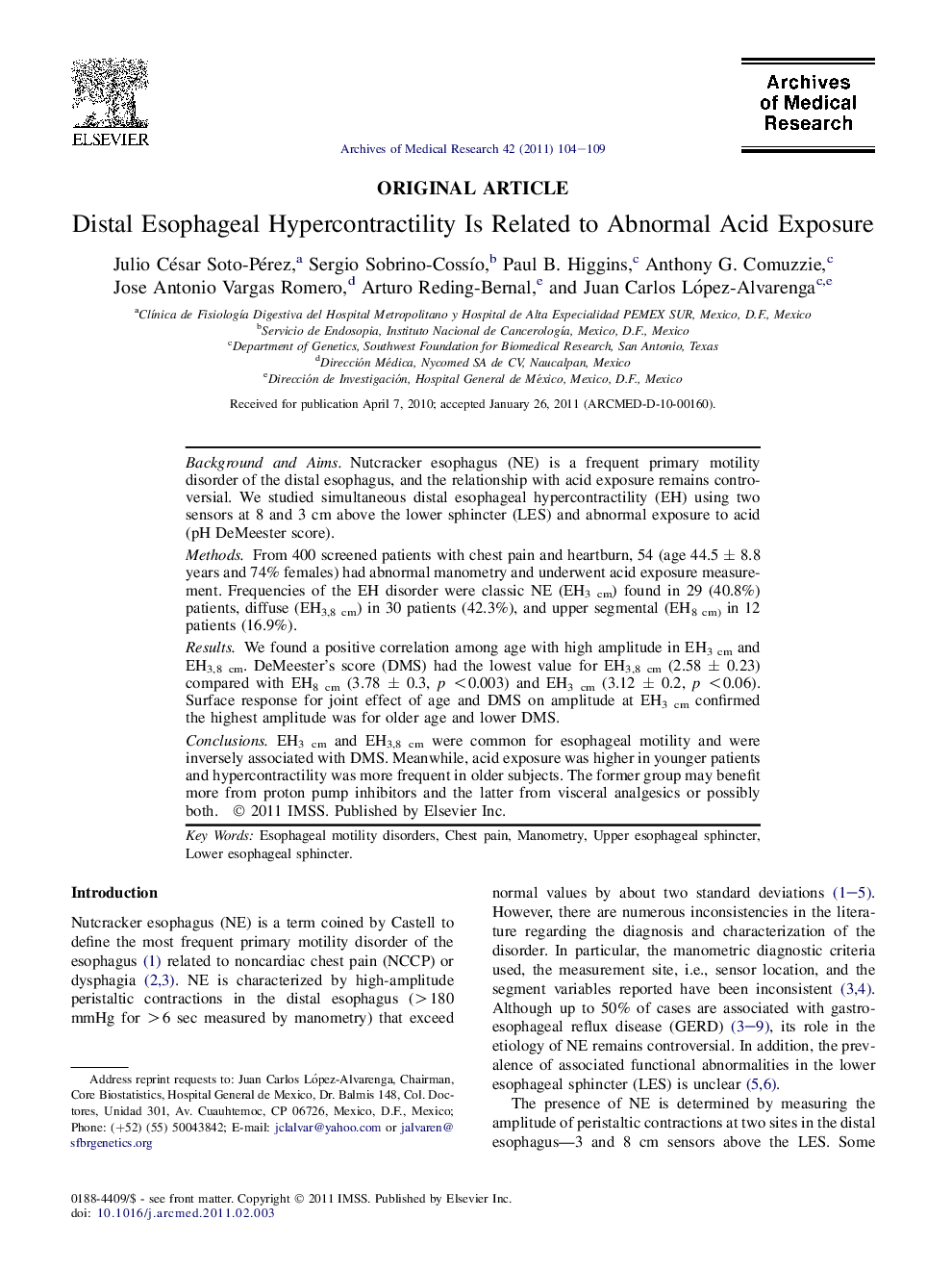| Article ID | Journal | Published Year | Pages | File Type |
|---|---|---|---|---|
| 3446677 | Archives of Medical Research | 2011 | 6 Pages |
Background and AimsNutcracker esophagus (NE) is a frequent primary motility disorder of the distal esophagus, and the relationship with acid exposure remains controversial. We studied simultaneous distal esophageal hypercontractility (EH) using two sensors at 8 and 3 cm above the lower sphincter (LES) and abnormal exposure to acid (pH DeMeester score).MethodsFrom 400 screened patients with chest pain and heartburn, 54 (age 44.5 ± 8.8 years and 74% females) had abnormal manometry and underwent acid exposure measurement. Frequencies of the EH disorder were classic NE (EH3 cm) found in 29 (40.8%) patients, diffuse (EH3,8 cm) in 30 patients (42.3%), and upper segmental (EH8 cm) in 12 patients (16.9%).ResultsWe found a positive correlation among age with high amplitude in EH3 cm and EH3,8 cm. DeMeester’s score (DMS) had the lowest value for EH3,8 cm (2.58 ± 0.23) compared with EH8 cm (3.78 ± 0.3, p <0.003) and EH3 cm (3.12 ± 0.2, p <0.06). Surface response for joint effect of age and DMS on amplitude at EH3 cm confirmed the highest amplitude was for older age and lower DMS.ConclusionsEH3 cm and EH3,8 cm were common for esophageal motility and were inversely associated with DMS. Meanwhile, acid exposure was higher in younger patients and hypercontractility was more frequent in older subjects. The former group may benefit more from proton pump inhibitors and the latter from visceral analgesics or possibly both.
